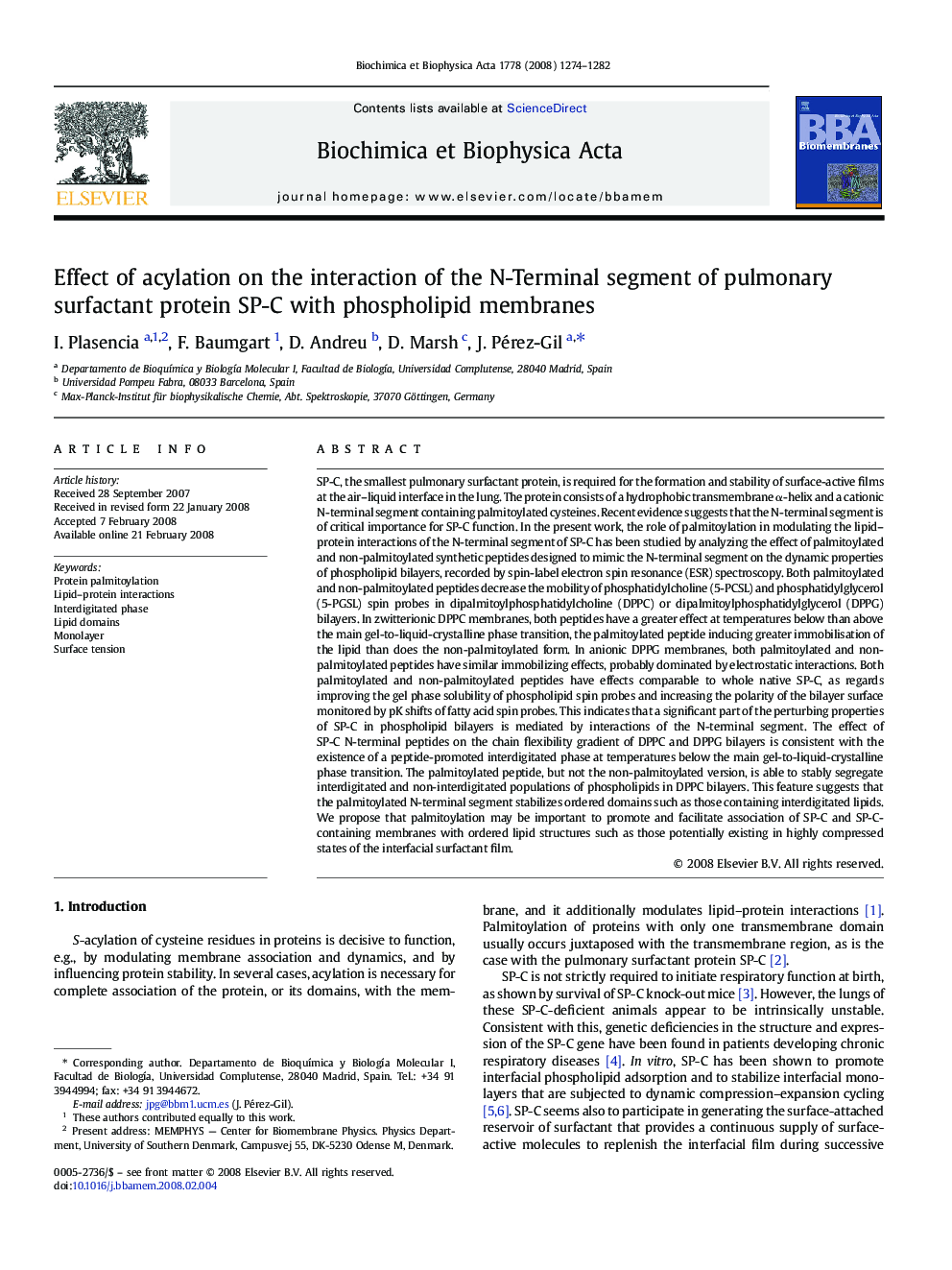| Article ID | Journal | Published Year | Pages | File Type |
|---|---|---|---|---|
| 1945419 | Biochimica et Biophysica Acta (BBA) - Biomembranes | 2008 | 9 Pages |
SP-C, the smallest pulmonary surfactant protein, is required for the formation and stability of surface-active films at the air–liquid interface in the lung. The protein consists of a hydrophobic transmembrane α-helix and a cationic N-terminal segment containing palmitoylated cysteines. Recent evidence suggests that the N-terminal segment is of critical importance for SP-C function. In the present work, the role of palmitoylation in modulating the lipid–protein interactions of the N-terminal segment of SP-C has been studied by analyzing the effect of palmitoylated and non-palmitoylated synthetic peptides designed to mimic the N-terminal segment on the dynamic properties of phospholipid bilayers, recorded by spin-label electron spin resonance (ESR) spectroscopy. Both palmitoylated and non-palmitoylated peptides decrease the mobility of phosphatidylcholine (5-PCSL) and phosphatidylglycerol (5-PGSL) spin probes in dipalmitoylphosphatidylcholine (DPPC) or dipalmitoylphosphatidylglycerol (DPPG) bilayers. In zwitterionic DPPC membranes, both peptides have a greater effect at temperatures below than above the main gel-to-liquid-crystalline phase transition, the palmitoylated peptide inducing greater immobilisation of the lipid than does the non-palmitoylated form. In anionic DPPG membranes, both palmitoylated and non-palmitoylated peptides have similar immobilizing effects, probably dominated by electrostatic interactions. Both palmitoylated and non-palmitoylated peptides have effects comparable to whole native SP-C, as regards improving the gel phase solubility of phospholipid spin probes and increasing the polarity of the bilayer surface monitored by pK shifts of fatty acid spin probes. This indicates that a significant part of the perturbing properties of SP-C in phospholipid bilayers is mediated by interactions of the N-terminal segment. The effect of SP-C N-terminal peptides on the chain flexibility gradient of DPPC and DPPG bilayers is consistent with the existence of a peptide-promoted interdigitated phase at temperatures below the main gel-to-liquid-crystalline phase transition. The palmitoylated peptide, but not the non-palmitoylated version, is able to stably segregate interdigitated and non-interdigitated populations of phospholipids in DPPC bilayers. This feature suggests that the palmitoylated N-terminal segment stabilizes ordered domains such as those containing interdigitated lipids. We propose that palmitoylation may be important to promote and facilitate association of SP-C and SP-C-containing membranes with ordered lipid structures such as those potentially existing in highly compressed states of the interfacial surfactant film.
